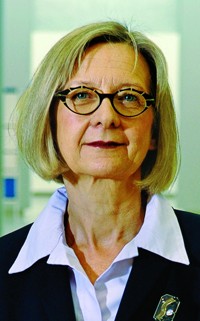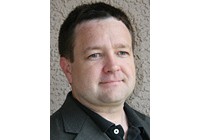Advertisement
Grab your lab coat. Let's get started
Welcome!
Welcome!
Create an account below to get 6 C&EN articles per month, receive newsletters and more - all free.
It seems this is your first time logging in online. Please enter the following information to continue.
As an ACS member you automatically get access to this site. All we need is few more details to create your reading experience.
Not you? Sign in with a different account.
Not you? Sign in with a different account.
ERROR 1
ERROR 1
ERROR 2
ERROR 2
ERROR 2
ERROR 2
ERROR 2
Password and Confirm password must match.
If you have an ACS member number, please enter it here so we can link this account to your membership. (optional)
ERROR 2
ACS values your privacy. By submitting your information, you are gaining access to C&EN and subscribing to our weekly newsletter. We use the information you provide to make your reading experience better, and we will never sell your data to third party members.
People
Frank H. Field & Joe L. Franklin Award for Outstanding Achievement in Mass Spectrometry
Recipients are honored for contributions of major significance to chemistry
by Stu Borman
January 7, 2008
| A version of this story appeared in
Volume 86, Issue 1
Sponsored by Waters Corp.
"A pioneer in the development and application of mass spectrometry in the biological arena" is how one colleague characterizes Catherine C. Fenselau. Another calls her an individual with "a distinguished record as an organic chemist, pharmacologist, biochemist, analytical chemist, and mass spectroscopist over a professional career of four decades."
Fenselau's research has spanned a broad range of mass spectrometry (MS) topics and applications. For instance, her group has studied posttranslational modifications in proteins with both bottom-up and top-down MS approaches (with and without prior fragmentation, respectively). The group has developed matrix-assisted laser desorption-ionization (MALDI) MS to carry out proteomics-based rapid characterization of airborne pathogens.
An aspartate-specific chemical cleavage method that complements the use of trypsin for preparing samples for bottom-up proteomics studies was introduced by Fenselau and her coworkers. In 1973, they identified the active metabolite of the anticancer drug cyclophosphamide. They characterized the drug laetrile by finding that it was a glucuronide conjugate. In an early use of electrospray MS, Fenselau and coworkers showed that a key insulin hexamer held together by two zinc ions also complexes six water molecules. And their use of enzymatic proteolysis to incorporate 18O labels into peptides to quantitate proteins has had an important impact on the development of proteomics.
Fenselau's group was one of the earliest to appreciate the value of tandem MS (MS/MS) in the analysis of complex mixtures and was one of the first to obtain a four-sector MS/MS instrument. This instrument provided the first determination of the proton affinity of arginine, based on a kinetic method.
A professor and former chair of chemistry and biochemistry at the University of Maryland, College Park, Fenselau formerly served in the same roles at the University of Maryland, Baltimore County. She received a bachelor's degree from Bryn Mawr College and earned a Ph.D. at Stanford University.
Fenselau was president of the American Society for Mass Spectrometry from 1982 to 1984 and president of the U.S. Human Proteome Organization from 2004 to 2006. She has served as an associate editor of Analytical Chemistry since 1990, has been on the advisory board of the Journal of Proteome Research since its inception in 2001, and has also served on the advisory boards of Chemical Research in Toxicology and C&EN. Her previous honors include the 2005 Hillebrand Prize of the Chemical Society of Washington and the 1985 Garvan Medal. Her husband, professor of pharmacology and molecular sciences Robert J. Cotter of Johns Hopkins School of Medicine, is another prominent mass spectrometrist.
Fenselau will receive the award and present the award address at an Analytical Chemistry Division symposium during the fall 2008 ACS national meeting in Philadelphia.






Join the conversation
Contact the reporter
Submit a Letter to the Editor for publication
Engage with us on Twitter